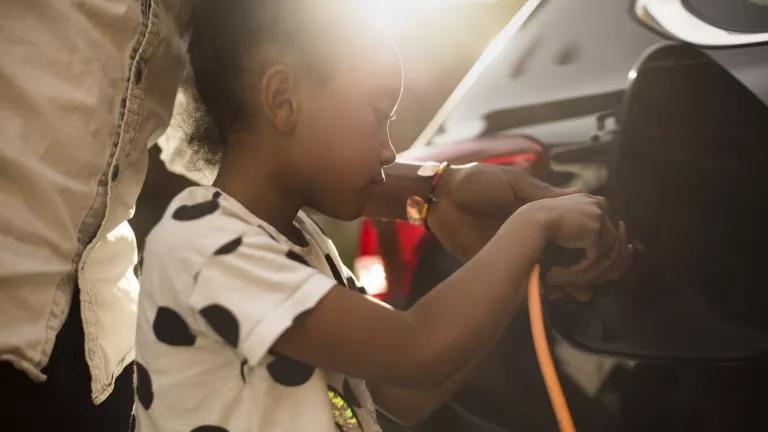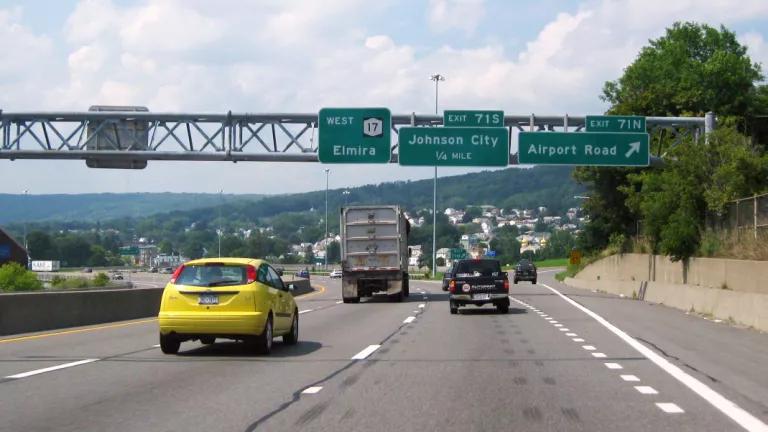Transportation Policies for NY to Achieve Its Climate Goals
If New York is to succeed in reaching its ambitious climate goals, it will need specific and bold transportation-focused goals and policies—while also considering long-term, sustainable ways to fund them. The comprehensive package of goals and policy recommendations can be used for a state roadmap to a zero-emission transportation sector.

A new Flyer XE40 electric bus at a charging station near the West Side Highway in New York City
New York achieving its climate goals may rest in the hands of the state’s Climate Action Council, a government advisory group tasked with preparing a plan to meet the goals of the Climate Leadership and Community Protection Act.
Since the transportation sector is the largest emitter of greenhouse gases in the state of New York, the policy recommendations of the council’s Transportation Advisory Panel (TAP) are key to getting the state to reduce climate-causing pollutants in the state and improve air quality.
As such, it’s vital that the TAP develop goals, policies, and programs that help New York achieve zero-emissions from the transportation sector equitably by 2050, remove barriers for widespread transportation electrification, and expand access to mass transit and other means to reduce travel by car.
To help inform the conversation, NRDC and fifteen other organizations submitted recommendations to the TAP that we see as vital for the state to achieve its climate goals.
As the transportation sector is broad and wide-reaching, there are four major goals that we recommend the state focus on to reduce emissions from on-road vehicles:
- Achieve 100% light-duty zero-emission vehicles by 2050
- Achieve 100% medium and heavy-duty zero emission vehicles by 2050
- Expand zero-emission active mobility and alternatives to driving
- Increase access to and electrify transit
But to achieve these goals, there are several policy initiatives and programs that need to be implemented in the near-term, including:
- Adopting the Advanced Clean Truck and Heavy-Duty Omnibus Rules and Advanced Clean Car 2 Program
- Expanding rebate programs to include used electric vehicles
- Increasing electric vehicle charging infrastructure
- Increasing electrified public transit
- Increasing access to E-mobility
In addition to these policy recommendations, it is vital that New York adopt programs that provide long-term, sustainable funding sources to support the transition to a zero-emission transportation sector—including a Clean Fuel Standard and the Transportation and Climate Initiative Program, which would provide a new and much-needed source of funding estimated to begin at more than $300 million dollars in the first year in New York alone for clean transportation projects.
Further, it is vital that equity and reducing pollution from New York’s historically overburdened communities be at the forefront and leading edge of program and policy development, and that representatives of these communities have a seat at the table as policies are developed in order to ensure that their needs and recommendations are well-incorporated.
If New York is to succeed in reaching its ambitious climate goals, it will need specific and bold transportation-focused goals and policies—while also considering long-term, sustainable ways to fund them. The comprehensive package of goals and policy recommendations can be used for a state roadmap to a zero-emission transportation sector.




